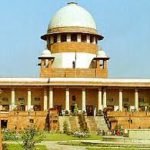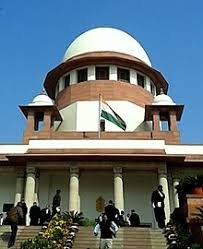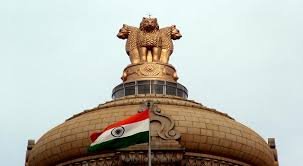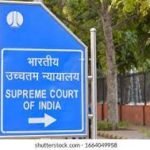The petitioners, belonging to the Central Reserve Police Force (CRPF), Border Security Force (BSF), Sashastra Seema Bal (SSB), Indo-Tibetan Border Police (ITBP), and Central Industrial Security Force (CISF), collectively known as CAPFs, sought recognition as OGAS, the grant of NFFU, and resolution of service stagnation due to existing recruitment rules. They requested directions for filling additional posts, amending recruitment rules, and conducting cadre reviews.
The High Court had directed the respondents to issue notifications granting the benefit of NFFU to the appellants. It had concluded that CAPFs are OGAS and possess the necessary attributes, finding no discrimination.
Law Involved :
- Organised Group-A Service (OGAS) Status: The central legal question revolved around whether CAPFs should be recognized as OGAS, which is a prerequisite for receiving NFFU. The DoPT’s Office Memorandum (OM) dated 19.11.2009 outlined six attributes of an OGAS.
- Non-Functional Financial Upgradation (NFFU): This benefit, recommended by the Sixth Central Pay Commission (CPC) for OGAS, was the primary financial upgrade sought by the appellants.
- Recruitment Rules and Cadre Review: The petitions also concerned the need for amendments to existing recruitment rules and regular cadre reviews to address stagnation and ensure proper career progression for officers.
- Precedents: The High Court had largely relied on previous judgments, particularly Union of India Vs. Harananda, which dealt with the Railway Protection Force (RPF) and NFFU.
Reasoning:
- High Court’s Rationale: The High Court had extensively relied on Harananda to declare CAPFs as OGAS and, consequently, entitled to NFFU. It found that the CAPFs fulfilled the attributes of an OGAS and highlighted the issue of stagnation.
- Supreme Court’s Analysis of OGAS Status: The Supreme Court found the High Court’s conclusion that CAPFs constitute OGAS to be “wholly untenable”. It noted that the Sixth CPC did not recommend NFFU for CAPFs. While CAPFs are part of Central Group A Services, the Court clarified that not all six attributes of an OGAS, as per the DoPT OM dated 19.11.2009, were fully met to automatically confer OGAS status for NFFU benefits.
- Interpretation of Harananda: The Court clarified that Harananda was limited to the grant of NFFU to RPF and did not declare RPF as an OGAS for all purposes. Therefore, the High Court’s broad application of Harananda to declare CAPFs as OGAS for all purposes was an error.
- Distinction from IPS and Civilian Services: The Court acknowledged the Union of India’s argument that CAPFs have distinct functional and operational requirements compared to civilian OGAS or Indian Police Service (IPS) officers. The Ministry of Home Affairs (MHA) is the cadre controlling authority for CAPFs, determining their structure and manpower.
- Acknowledged Grievance of Stagnation: Despite overturning the High Court’s blanket declaration of OGAS for NFFU, the Supreme Court unreservedly accepted that the grievance of service stagnation in CAPFs is legitimate and discernible. The Court noted that over 18,000 officers were fighting for justice, and 153 officers had stagnated between 1987-2005.
Holding :
- High Court Judgment Overturned: The Supreme Court set aside the High Court’s finding that CAPFs constitute OGAS for all purposes and its directions for granting NFFU based on that finding.
- Government’s Acceptance of OGAS Status: The Court, however, acknowledged that the Central Government has accepted that CAPFs are included in OGAS, and the natural consequences of this should follow, implying a broader recognition beyond NFFU.
- Mandate for Cadre Review: To address the undisputed issue of stagnation, the Court issued specific directives:
Cadre review for all CAPFs must be carried out within a period of six months from the date of the judgment.
The Ministry of Home Affairs (MHA) and the Department of Personnel and Training (DoPT) are directed to give effect to the DoPT OM dated 12.07.2019 and undertake the exercise for review of the existing service rules/recruitment rules of each of the CAPFs.
DoPT shall take an appropriate decision within three months of receiving the action taken report(s) from MHA regarding cadre review and the review of existing service/recruitment rules.
Objectives of Review: The review must be conducted with the twin objectives of removing stagnation and ensuring the operational and functional requirements of the forces are met. This is intended to lead to a continuous reduction in the long-standing grievances of CAPF officers.
The civil appeals were thus disposed of with these directions.
Sanjay Prakash And Others V. Union Of India And Others
Supreme Court: 2025 INSC 779: (DoJ 23-05-2025)








